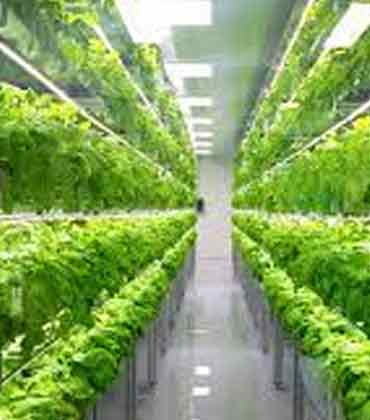THANK YOU FOR SUBSCRIBING
By Ganesh Jayaram, Vice President of Information Technology, John Deere [NYSE: DE]
How the Ag Industry is and has been Driving Automation in...
By Dennis Beard, Managing Partner, Serra Ventures
One Investor's View of Investing in Ag Tech Startups
By Carter Williams, CEO and Managing Partner, iSelect Fund
Affordable, Healthy, Scalable: Why 'System C' is the...
By Jaleh Daie, Ph.D.Partner at Aurora Equity and Chairman of the AgFood Tech at the Band of Angels
A Case for AgFoodTech Outperformance in the Digital Age,...

Uber Eats: Hospitality, And Partnering For The Future Of Food
Janelle Sallenave, Head Of Uber Eats, Us & Canada At Uber

 Janelle Sallenave, Head Of Uber Eats, Us & Canada At Uber
Janelle Sallenave, Head Of Uber Eats, Us & Canada At UberUber Eats launched in the US in 2015. Since then, we have gotten to work with over 150,000 restaurant partners here, each one critical to our mission of powering food experiences that fuel everyday life.
That technology is changing the business of hospitality is well-documented, and digitally-enabled delivery is on the rise. According to NPD Group, restaurant’s digital orders (booked via app, web, or text), now account for $26.8 billion in annual spending, a number that’s growing even as in-store service remains strong. And from new payment options to the everchanging behaviors of tech-savvy consumers, restaurants are left asking whether technological advances are challenges to manage or strategic opportunities to embrace.
At Uber Eats, we see our global scale and operations expertise—after all, logistics are in Uber’s heritage—as a key differentiator in our ability to be a technology partner to the restaurant industry in these exciting times. This means thinking about how we provide more value to restaurant owners and operators in a way that leverages emerging technologies to grow revenues and to extend restaurant hospitality into the homes of diners in new ways.
The starting point of our commitment to partnership is meeting each restaurant owner-operator where they are whether large quick-service chains or family-owned single locations—answering their questions and providing solutions to meet the unique needs of their businesses.
For some, the mechanics of delivery are new. Should I deliver? Should I create my delivery fleet? Should I partner with a platform like Uber Eats that enables me to connect with delivery people? For others, delivery is a given, and the questions are on efficiency and scalability. How can I make the economics of delivery work for my business in the long run? And even more, are focused on growth. How can I use data and insights from a third party platform to develop entirely new revenue streams?
“The starting point of our commitment to partnership is meeting each restaurant owner-operator where they are—whether large quickservice chains or family-owned single locations—answering their questions and providing solutions to meet the unique needs of their businesses”
Our team at Uber Eats sees strategic partnerships at every level.
To begin with, we strive to be a technology partner who makes doing business easier—connecting a restaurant’s kitchen with the homes of the 111 million monthly active users on the Uber platform around the world. When restaurants decide to work with us, many are active on the platform and sending out their first orders in under ten days—increasing incremental sales from day one. And when you join the Uber Eats platform, you can connect to a network of independent delivery people or use your own, customizing the experience to the needs of your business.
Once on Uber Eats, restaurants benefit from an array of offerings that help to reach new customers. For example, operators can create, target, and track their in-app promotions to stand out from the crowd, like offers of $5 off $20 or free drinks with orders over a certain size. We’ve even worked closely with restaurants developing their strategy of native applications to reach their customers on their terms—for example, Uber Eats powers the delivery of sweet green salads across the United States.
But we also speak to restaurants who tell us they’ve got delivery figured out. They’re up and running, they’re optimized, and they are looking to the future and asking how to leverage technology like Uber’s to grow. They want to unlock new value—and we’re here to help in many ways.
Uber Eats partners with restaurants like this every day to use insights from our platform to answer this question and more. One way is with virtual restaurants, which leverage Uber Eats technology and insights to identify selection gaps between supply and demand. We work with our restaurant partners to fill those gaps by helping them spin up new, deliveryonly, menus out of their existing kitchens. In these virtual restaurants, sushi becomes a poke bowl for delivery, and pizza becomes calzones. On average, Uber Eats restaurant partners with a virtual restaurant see sales increases of over 50%.
We may work in technology, but we’re all foodies at Uber Eats—and care for quality and hospitality is baked into the ways we think about working with our partners. As a consumer technology platform, we’re customer-obsessed. And what our users care most about is the food from the restaurants they love. By putting restaurants first and being partners in an increasingly tech-heavy food world, we satisfy the cravings of both.
Read Also


![Ganesh Jayaram, Vice President of Information Technology, John Deere [NYSE: DE] How the Ag Industry is and has been Driving Automation in Transportation](https://www.fbtechrevieweurope.com/newstransfer/upload/370x420_gOi4.webp)












